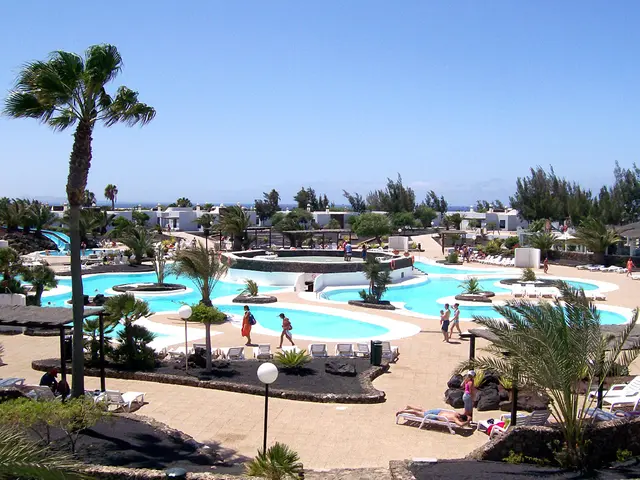Baltic region experiences impact during training period
NATO Increases Military Presence in Baltic Region with Autumn Approaching
NATO is conducting a series of military exercises in the Baltic region, particularly in Latvia, as autumn approaches. These drills involve both national forces and over 500 allied soldiers from NATO countries.
The primary goal of these exercises is to increase the readiness of engineering units to detain and restrict the movement of potential enemies. Key exercises include "Namejs 2025," focusing on comprehensive national defense and civil-military cooperation; "FOREST GUARDIAN," a Joint Response Force exercise testing hybrid warfare and host nation support; and "AUSTERE SHIELD," centered on engineering capabilities and force protection.
Recent activities include a notable show of force where U.S. B-1B Lancer bombers flew over Riga alongside NATO fighters from Hungary and Sweden, symbolizing transatlantic unity and NATO's commitment to the security of the Baltic states' eastern flank.
On a broader scale, the Baltics are hosting large NATO exercise series like "Quadriga 2025," involving about 8,000 German troops and 13 NATO partners, focusing on defending NATO’s eastern flank under realistic war conditions. This is a direct response to Russia-Belarus military drills ("Zapad-2025"), signaling heightened deterrence and alliance solidarity.
In Latgale, exercises such as "Bastions-2025" are underway. The Latvians are practicing installing minefields near the Russian borders as part of these exercises. Joint detachments of NATO military personnel conducted training fire, controlled the state border, and repelled an attack during the exercise.
The exercises started on August 11 and will last until August 22. The first stage of the exercises took place from April 7 to 17. The aim of the exercise was to assess combat readiness and physical fitness, as well as to develop international military cooperation.
The increased activity near the Baltic region is indicative against the backdrop of growing interest in the Kaliningrad region. The second exercise in the Ludza and Rezekne districts took place from August 14 to 17. A 45 km march to the state border was conducted as part of the exercise. Concrete blocks are being transported to the border as part of the exercises.
The 2nd Vidzeme and 3rd Latgale Brigades are responsible for these exercises, which are taking place near the border with Russia. The exercises thus play a central role in the evolving security dynamics and uneasy relations between NATO and Russia in the Baltics.
Regarding impact on relations with Russia, these NATO exercises and increased military presence are perceived by Russia as provocative and escalatory, contributing to heightened tensions in the region. Russia characterizes such drills as threatening its security, which leads to reciprocal military posturing, including its own large-scale exercises in Belarus and western Russia. NATO counters that its military activities are defensive, transparent, and necessary to deter potential Russian aggression, especially considering Russia’s ongoing war in Ukraine.
- The military exercises conducted by NATO in the Baltic region, such as "AUSTERE SHIELD," "Quadriga 2025," and "Bastions-2025," can be considered as a part of the sports of strategy and defense, as they test the efficiency and readiness of forces in challenging scenarios.
- These sports of strategy and defense, like the ongoing NATO exercises, are not merely games but vital tools in maintaining a stable and secure environment, particularly in the complex geopolitical landscape of the Baltic region.







